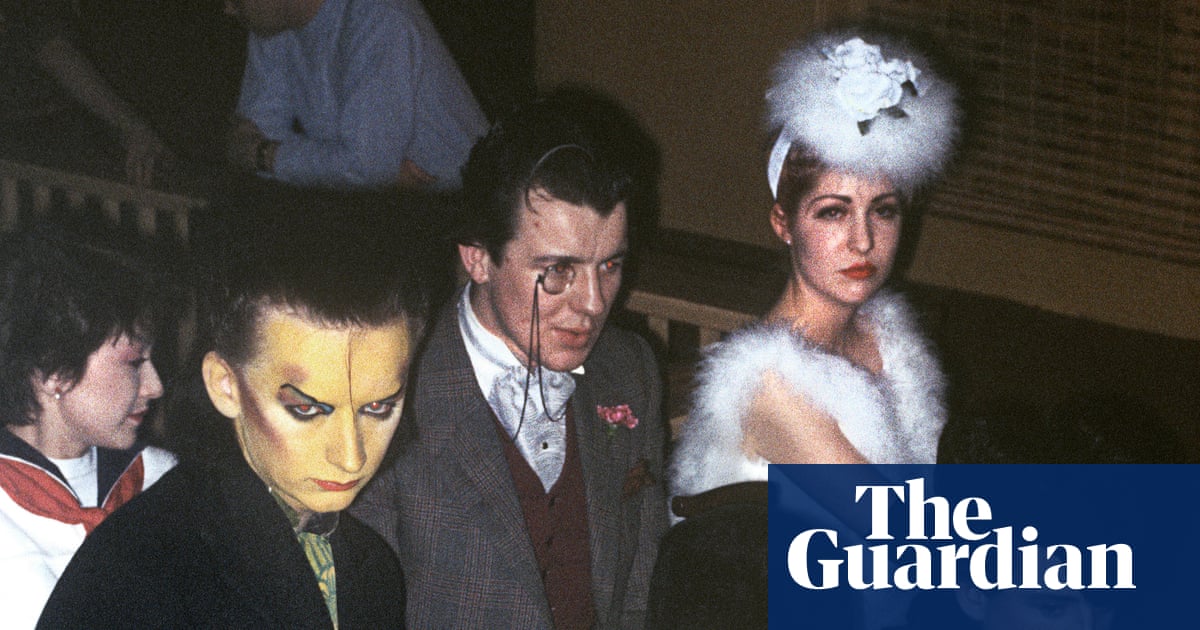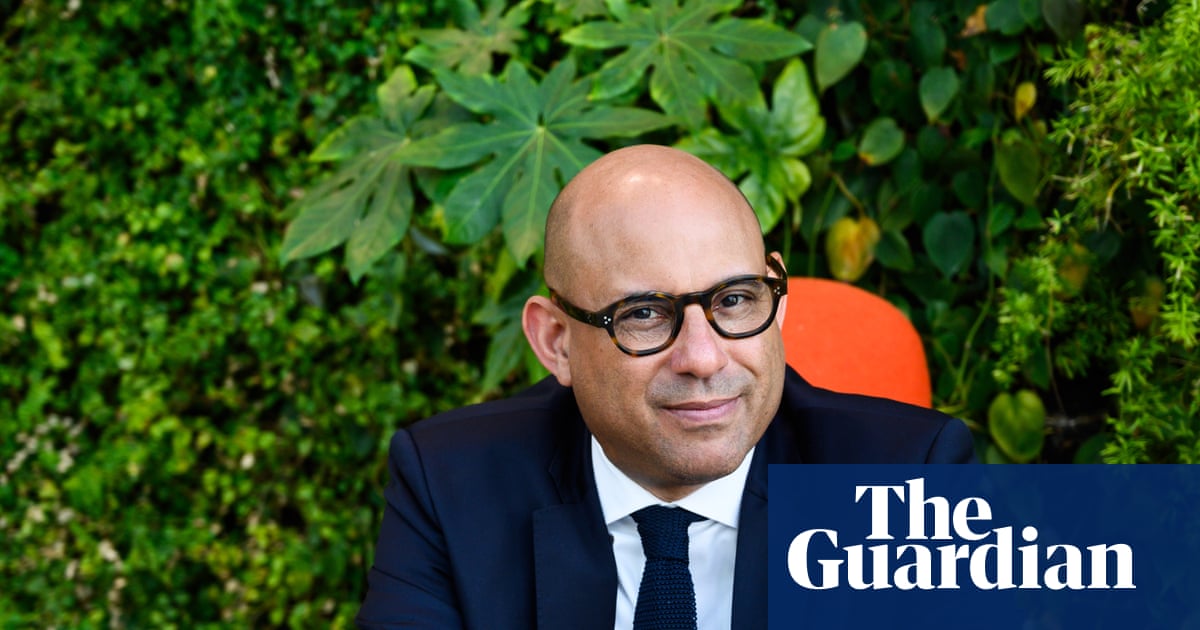I like to talk as much as the next man – and men like to talk. A now-famous study by the University of California, Santa Barbara, noted that, in a series of recorded public conversations between men and women, 48 interruptions occurred, 46 of which came from men. The 2024 Women in the Workplace survey by McKinsey found that nearly 40% of women experienced being interrupted or spoken over “more than others” at work, against 20% of men.
Men in public spaces, according to research, talk more than women, talk over women, and talk down to women, contributing to the rise of gender neologisms such as manologuing, bropropriating and mansplaining. So, aware that men tend to dominate and disrupt, aware that the world at large feels unbearably loud, aware that I, too, often add to that noise, I decided to learn to keep my mouth shut – starting in the general hellscape of social media.
I have often felt compelled, on seeing an idiotic post, to point out its idiocy, as though I alone had noticed it. It’s a compulsion encouraged by the reward-based models of social media platforms. Users think of an interesting thought or response (trigger), send a post (behaviour), receive likes and re-posts (reward). Dopamine arrives as part of the feedback loop and we repeat the cycle.

The compulsion to post relies on signalling, too – and not just of “virtue”. Read through your social media timelines and, if you’re an overtalker, you’ll find insecurities. Mine read like an exposé of impostor syndrome: barely veiled attempts to appear intelligent. I seldom mentioned the football, but try to stop me posting commentary about Hamlet at the Young Vic, as though my followers were desperate for my “original” takes on Hamlet.
I once live-tweeted my experience reading War and Peace just to show that I was the sort of person who read War and Peace. Life events fell victim to the social media lens. I could not simply enjoy Christmas or birthdays: I framed events in odd ways, repurposed them in pursuit of dopamine. “Books, booze and cherry blossoms,” I once tweeted, after workshopping the image and tagline with my partner on our anniversary. Nothing was sacred, nothing real, everything permitted.
I’ve had social media for nearly two decades, the majority of my life. It seemed obvious that, as I slouched into my mid-30s, I needed a cleanse. I’d already deleted Facebook and Instagram. I kept X but removed all past posts, then only posted links to my writing.
Deleting social apps removes any doubt that social media is addictive. I experienced genuine withdrawal symptoms: a touch of irritability here, a hint of anxiety there. Small-scale Fomo washed over me, as though all the cool kids were hanging out on Elon Musk’s X. But the withdrawal symptoms soon dissipated and left me in a state of embarrassment – embarrassed by my past actions, as if I could not recognise the man I was back then, all those hours ago. The compulsion to opine on any given topic at any given time, that most universal form of entitlement, suddenly seemed a bit silly, a feeling captured by ex-overtalker Dan Lyons in his book STFU: The Power of Keeping Your Mouth Shut in a World That Won’t Stop Talking: “The world was not sitting with bated breath, waiting to hear what I would say.”
Talking less in real life proved a tougher ordeal. My family are rough around the edges, my friends are on the wrong side of unruly: the people I love seldom get to finish sentences. I have often felt that my overtalking relied on the desire to be heard, a Darwinian survival of the loudest. But communication coach Weirong Li told me that the compulsion to talk often stems from the desire to escape silence. “Most people speak to avoid discomfort – not because they have something essential to say.” That rang true: the urge to avoid awkward silences has always felt urgent.
Allow me to trigger your anxiety: you’re in a lift and a co-worker you sort of know enters, or you’re at a bus stop and a distant family friend appears. I’d take the stairs. I’d walk. If I found no escape, I’d do the sensible thing: talk as quickly as possible about anything and everything until the saga mercifully ends. Last year, I saw an old mate from school walking towards me on a London street, so I dived into Sam’s Chicken. I’m a vegetarian. I stole a glance as the bloke walked past: not my mate, not even close. I bought chips and left.
People who can tolerate uncomfortable silences are typically better listeners. Studies show that embracing awkward silences improves emotional self-regulation, fosters empathy and builds trust between conversational partners. I asked a friend, Makomborero Kasipo, a writer and registrar in psychiatry, to characterise my overtalking. “You talk to fill silence,” she said. “You express yourself, which is good, but then feel the need to defend what you have just expressed, then defend that against an imagined response, then apologise for talking too much, then apologise for apologising.” Mako offered advice: learn to feel comfortable in silence. “Develop the skill to let silence breathe.”
That meant practice, embracing real-world silence despite every fibre of my British being pushing me to discuss the weather. I noticed two responses to my newfound silence: most people ranted – bless them – or I faced unimaginable awkwardness. I stood by a bus stop with my mum’s friend and lasted roughly 20 seconds until I finally broke: “Weather’s weird, isn’t it?” I said. I’m still practising. Suffering awkward silences has been an odd learning curve: horrific at first, only slightly less horrific later on, still horrific now but perhaps not as horrific.
Talking less is not just about limiting the compulsion to talk. It’s also about changing the ways in which we converse. One of my main problems, according to my partner and any logical observer, was conversational narcissism: the art of bringing every discussion back to me. I’m very good at it. Most of us are. Sociologist Charles Derber recorded more than 100 dinner conversations and found two types of reaction: the support and the shift response. The support response is the lovely one, the bread and butter of therapists, the one that builds on the initial talker’s points and draws further discussion. A New Yorker cartoon depicts the bad response, the more common response, the shift response, as a man in a blazer at a dinner party says, “Behold, as I guide our conversation to my narrow area of expertise.”
Biology justifies the popularity of the shift response. Dopamine floods our brains when we talk about ourselves. Our bodies reward our narcissism. But listeners often face an altogether different physiological reaction: the production of cortisol, the fight-or-flight hormone, causes discomfort and even resentment.

I started to notice my interruptions, the creative ways I managed to bring the conversation back to my favourite topic: me. I noticed how, in lieu of listening, my mind would embark on wild and weird adventures, fighting against the odds to relate everything back to my experience. My partner recalled the time that I said, to my embarrassment: “That reminds me of me.” Matt Cahill, a psychotherapist, told me that shift responses can prove profoundly damaging to vulnerable talkers. “People try to open up about their problems and find themselves interrupted with, ‘Oh wow, that happened to me once!’ followed by a tangential story, diverting from the initial intent, which was to find understanding.”
Shift responses limit our capacity to listen and can harm the talker. So I aimed to alter my interactions. I leaned heavily on one of the many mantras I found in STFU: “When possible, say nothing.” My partner seemed surprised over long dinners, as I spurned the urge to interrupt, asked (hopefully) meaningful questions, and abruptly concluded self-absorbed rants, rejecting the promise of dopamine. She seemed a little unnerved, at least at first, and asked whether I was OK, whether something bad had happened. I was just listening, I said.
Practise listening and you’ll stop talking. Active listening has become a buzzword, abused by droves of middle managers, corporate gurus and lifestyle coaches. Listening, to them, depends on the right sort of nod, mirrored questions and choreographed body language, always in pursuit of a goal: to make a sale, gain a promotion, secure a date, and so on. It is listening as performance. Emphasis remains on the outcome, not the process. But active listening, in its initial form, focuses on the talker. It is a skill that demands full attention, use of all the senses, the removal of obstacles to comprehension, and excavating meaning below intent.
In You’re Not Listening, Kate Murphy writes: “The ability to listen carefully, like the ability to read carefully, degrades if you don’t do it often enough.” You can get better or worse at listening. You can excel or fail. And active listening proves exhausting for the out-of-practice listener, something I sought to rectify through practice, through conscious effort during every conversation.
Not talking at work proved easier. I’m a writer and editor, and a fan of Cal Newport, author of Deep Work and A World Without Email - which means I have an aversion to modern ways of working. I can’t stand rambling emails and absurd operational tautologies, meetings to discuss meetings, committees to assemble committees. I spend most of my time at work actually working, so I feel confused by companies with managers managing no one, managers who manage other managers, consultants who help the managing managers manage.
Fyodor Dostoyevsky, serving time in a prison camp, said the worst form of torture was forcing people to endlessly perform a pointless task. Hyperbole, perhaps, but that’s the modern workplace, left unchecked. I’m an expert at getting out of meetings – less than a fifth of meetings are productive, after all, according to a generous survey by the Harvard Business Review – but, owing to my meeting reluctance, I tend to overcompensate in the meetings I do attend.
I conducted a test: I analysed meeting transcripts to uncover how often I spoke, the duration of speech, the number of interruptions and the relevancy of my replies. The results showed that, despite asking for input, I spoke too often, interrupted on occasion, and commanded more than my share of conversation. So I’m taking action in meetings.
Cahill advocates the Wait methodology, which requires posing a question to yourself before speaking: “Why am I talking?” You can talk if the answer to Wait is convincing. (The answer is seldom convincing.) “Wait isn’t about not talking,” Cahill says, “but being present enough to question whether you’re actually contributing to the moment or instinctively filling in the space.”
I combined Wait with a tactic that I found in STFU, “Pass the ball quickly”, which reminds the overtalker to acknowledge the previous speaker, remain concise in response, and give someone else the proverbial ball.
Perhaps the greatest tactic requires only a pen and paper. In his book Atomic Habits, James Clear suggests creating barriers to break our bad habits. Remove the TV from the bedroom, or store chocolate in a cupboard far, far away. Note-taking creates a barrier for the compulsive talker. Jot down everything you want to say during a meeting, no matter how big or small, then wait for your turn to speak, like a patient child. Before talking, review your notes to identify the points that deliver value. I assure you that few will. We are far less interesting than we assume. Note-taking provides visual evidence of overtalking, showing you all the things that you would have said, left to your own devices.
I found at work, using the above tactics, along with active listening, that I minimised my contributions, but those contributions felt more valuable. And, in time, the need to talk seemed less intrusive, the urge to fill silence less urgent.
Self-improvement relies on awareness of the problem and a will to counter the problem. In the case of talking less, as with most valuable pursuits, practice remains the only route to success. I have a habit of falling into old habits, but even in the short term I noticed progress. Moving away from platforms that incentivise noise and extremity, and disincentivise nuance, seems obviously beneficial. You will never regret not posting.
My contributions at work have become more impactful and my appetite for collaboration has increased. My partner and I, after an initial unnerving period, in which she found my quiet vaguely haunting, now seem to communicate in more fruitful ways, largely based on my conscious use of support rather than shift responses. “I appreciate you asking more questions,” she said, to which I responded: “Do you?” I have found, in general, with friends and family and strangers, that the compulsion to talk has reduced, the itch to interrupt has lessened, the capacity to listen has grown. And the rest, as Hamlet said, and as I once tweeted, is silence.

 2 months ago
66
2 months ago
66

















































